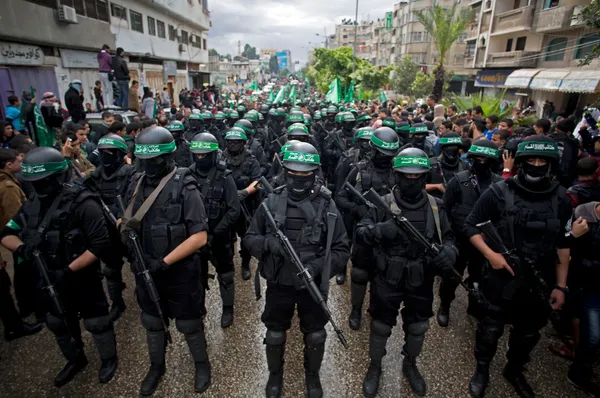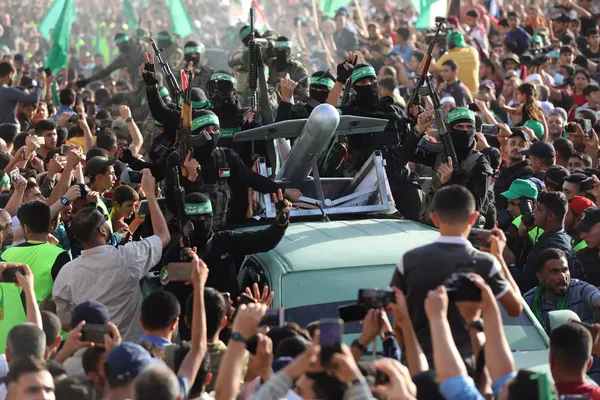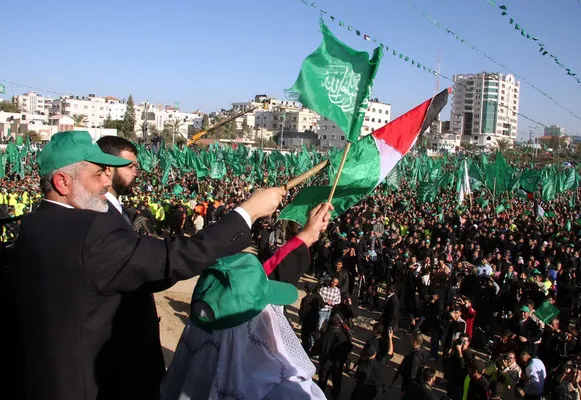



Hamas History: A Comprehensive Overview
Explore the detailed history of Hamas, the Palestinian militant organization, from its origins to its significant role in the Israeli-Palestinian conflict.
Introduction
Hamas, also known as the Islamic Resistance Movement, is a Palestinian nationalist and Islamist organization with a profound impact on the Israeli-Palestinian conflict. Founded in 1987, Hamas has a complex history marked by ideological evolution, political maneuvers, and recurrent conflicts with Israel. This article delves into the history of Hamas, exploring its formation, major conflicts, leadership, and current status.
Origins of Hamas
Formation and Ideology
Hamas was established in 1987 during the First Intifada, a Palestinian uprising against Israeli occupation. It originated from the Muslim Brotherhood, an Islamist organization with a significant presence in Gaza and the West Bank. The group’s charter, published in 1988, called for the destruction of Israel and the establishment of an Islamic state in historic Palestine.
The First Intifada and Early Activities
During the First Intifada, Hamas rapidly gained support among Palestinians for its militant stance and social services. It opposed the secular approach of the Palestine Liberation Organization (PLO) and refused to recognize Israel. Hamas's early activities included organizing protests, establishing networks of schools and clinics, and carrying out attacks against Israeli military targets.
Political Ascendancy
Participation in Elections
In 2006, Hamas won the Palestinian legislative elections, defeating the Fatah party. This victory led to a significant power shift in Palestinian politics. However, the electoral success did not translate into broader international recognition due to Hamas's refusal to renounce violence or recognize Israel. The group's governance of Gaza began in earnest after a violent conflict with Fatah in 2007, resulting in a split between the West Bank, governed by Fatah, and Gaza, controlled by Hamas.
Governance and Challenges
Hamas's rule in Gaza has been characterized by frequent conflicts with Israel and severe economic challenges exacerbated by an Israeli-Egyptian blockade. The blockade, imposed in 2007, was intended to limit Hamas's ability to import weapons but also restricted goods and movement for Gaza's civilians, leading to widespread economic hardship.
Major Conflicts
Operation Cast Lead (2008-2009)
The first major military confrontation between Hamas and Israel occurred during Operation Cast Lead in late 2008. This conflict was initiated by Israel in response to persistent rocket fire from Gaza. The operation resulted in significant casualties and destruction in Gaza and highlighted the ongoing hostilities between the two sides.
Subsequent Conflicts (2012, 2014, 2021)
Following Operation Cast Lead, major conflicts broke out in 2012, 2014, and 2021. Each of these conflicts followed a similar pattern: escalations in rocket fire from Gaza led to large-scale Israeli military responses. These operations caused extensive damage in Gaza, significant casualties, and temporary ceasefire agreements that seldom led to lasting peace.
Recent Developments
October 7, 2023 Attack
On October 7, 2023, Hamas launched a large-scale assault on Israel, marking the beginning of the most recent and intense conflict. This attack led to unprecedented casualties and drew significant international attention. The ensuing war has had profound implications for regional stability and international relations.
Current Leadership and Structure
Hamas is currently led by Ismail Haniyeh, with Yahya Sinwar overseeing day-to-day operations in Gaza. The organization maintains a complex structure with a political bureau responsible for strategic decisions and a military wing, the Izz ad-Din al-Qassam Brigades, conducting its armed operations.
Funding and Support
Hamas has historically received funding from Palestinian expatriates, private donors in the Persian Gulf, and countries like Iran and Turkey. Despite periods of strained relations, especially during the Syrian Civil War, Iran remains a significant backer, providing funds, weapons, and training.
FAQs
What is the primary goal of Hamas?
Hamas aims to establish an Islamic state in historic Palestine and has historically sought the destruction of Israel.
How did Hamas come to power in Gaza?
Hamas gained control of Gaza after winning the 2006 Palestinian legislative elections and subsequently ousting Fatah in a violent conflict in 2007.
What was the impact of the 2008-2009 conflict on Gaza?
The 2008-2009 conflict, known as Operation Cast Lead, caused significant destruction in Gaza, resulting in extensive casualties and infrastructure damage.
How does Hamas receive funding?
Hamas receives funding from private donors, expatriates, and countries like Iran and Turkey, which provide financial support and military aid.
Who leads Hamas today?
Ismail Haniyeh serves as the political leader of Hamas, while Yahya Sinwar oversees operations in Gaza.
What triggered the October 7, 2023 attack?
The October 7, 2023 attack was a large-scale assault by Hamas on Israel, marking the beginning of a significant and ongoing conflict.
Conclusion
Hamas's history is a testament to the complex and often violent nature of the Israeli-Palestinian conflict. From its origins in the First Intifada to its current role in Gaza, Hamas remains a pivotal and contentious player in the region. Understanding its history is crucial to comprehending the broader dynamics of the Middle East conflict.
💔 Donate to Support Gaza's Children
Your donation can make a significant difference in the lives of children affected by the crisis in Gaza. Donate now via Bitcoin or Stripe to provide essential aid and support.
Donate Now